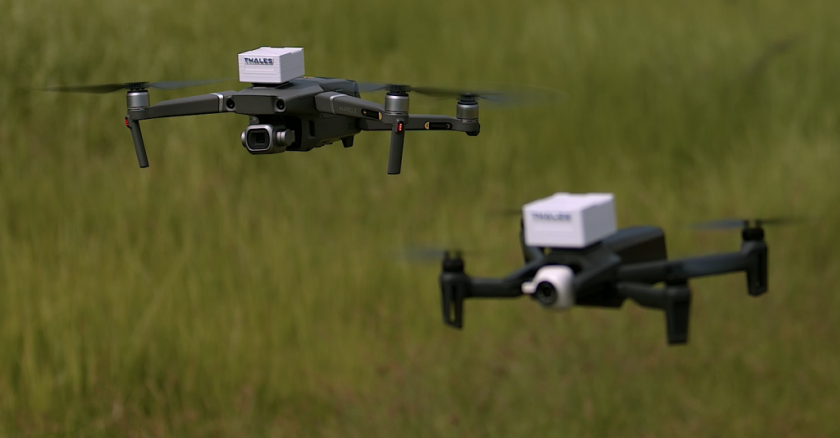Remote identification (remote ID) is a feature of new regulatory frameworks in the US and Europe and is driving the need for secure ID and tracking capability onboard drones. Thales’ ScaleFlyt solution is evolving to meet the needs of the Unmanned Traffic Management (UTM) environment. Thales’ Singapore-based product owner Gek Hung Tay outlines the latest developments:
The Thales ScaleFlyt remote ID solution is, in effect, a virtual license plate which enables a drone to be geolocated and identified, along with its remote pilot. In essence, it delivers the who, where, when, and why information about a given drone! That identification data is then transmitted through the cellular network, which means that airspace management authorities have long-range airspace awareness that extends far beyond their visual line of sight.
The product is designed to support both US and European standards and can be used universally where these standards are applied.
The core component of the Remote ID solution is a small (5cm x 5cm), lightweight (60g) box that is attached to the top of the drone. The tracking data is then transmitted based on the information inputted by the user into the associated system. Configuration and tracking is straightforward and involves attaching, switching on, and viewing the drone(s) on a mobile device or web app. In parallel, the drone can be monitored by the airspace manager monitoring all drones flying in a given airspace.
The ScaleFlyt suite is a set of solutions designed to enable operators to scale up their drone operations, by helping them comply with regulations, manage their fleet and equipment, and ensure all operations are safe and secure. Other than Remote ID, the ScaleFlyt portfolio includes a Geocaging offering to ensure drones remain within the designated zone of their flight mission; an Antijamming solution to detect, reduce or eliminate jammer signals so the operator can continue their drone operations; and the Soarizon digital platform so that operators can conduct pre-flight planning/risk assessment, manage equipment, and export mission data.
Drones are by nature connected, and can be considered as an IoT (Internet of Things) device. There is an increase in cyber attacks on IoT devices which can be disruptive and dangerous to drone operations. Hence, cybersecurity is a key area that Thales is focusing on. ScaleFlyt is designed to be cybersecure by design, from the embedded, tamper-proof SIM in the unit, to the encryption technologies used for the data transmission and data at rest.
ScaleFlyt is still in the early stages of development, and the solution will continue to evolve in line with the emergence of regulatory standards and their deployment.
For more information visit:




